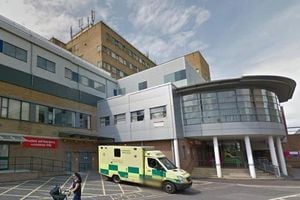FDA Greenlights New Rapid Tests for Sepsis Amid Rising Global Concerns
The recent advancement in sepsis diagnostics has been spotlighted as the FDA approved a groundbreaking rapid test by Prenosis, signaling a significant step in the fight against this life-threatening condition. Alongside this development, Bosch and Randox are also making strides with their innovative testing solutions. These breakthroughs in diagnostics are crucial given the alarming rise in sepsis cases worldwide, driving the focus on early detection and treatment.
Sepsis, often termed a hidden killer, arises when the body’s response to infection causes widespread inflammation. This can lead to tissue damage, organ failure, and ultimately death if not addressed swiftly. With its increasing prevalence, particularly in vulnerable populations, there is a pressing need for rapid diagnostics to enhance patient care.
According to recent market research, the sepsis diagnostics market is projected to double by 2032, potentially reaching a worth of USD 1.8 billion. This growth is attributed to several factors, including technological advancements, escalating awareness among healthcare professionals, and regulatory mandates highlighting the importance of quick and accurate diagnosis.
Timely identification is critical as each hour of delayed diagnosis can significantly worsen patient outcomes. The new rapid tests are designed to swiftly identify various biomarkers associated with sepsis. This allows healthcare providers to initiate treatment more promptly, potentially saving lives and reducing healthcare costs associated with prolonged hospital stays.
Key players in the sepsis diagnostics arena are constantly innovating to stay ahead in a competitive market. The latest approved technology from Prenosis is viewed as a game-changer—offering not only speed but also accuracy in detecting sepsis. The growing trend of integrating artificial intelligence and machine learning into diagnostic solutions is also reshaping how parents and caregivers approach sepsis treatment.
The market growth is further supported by an aging global population, increasing instances of antibiotic resistance, and a rise in healthcare-associated infections. This underscores the urgent need for effective diagnostic tools to combat sepsis. As the demand for rapid testing escalates, many companies are stepping up to the challenge, with promises of new products aimed at improving diagnostics for sepsis.
However, not all aspects of the market expansion are straightforward. The complexity involved in diagnosing sepsis, which includes evaluating multiple biomarkers and clinical parameters, continues to pose challenges. Additionally, the high costs associated with specialized sepsis diagnostic tests can often hinder their availability, particularly in resource-limited healthcare settings.
Geographically, the North American market continues to lead due to its advanced healthcare infrastructure and a high incidence rate of sepsis. In Europe, stringent regulations and growing awareness are driving substantial consumption of sepsis diagnostics. Meanwhile, the Asia Pacific region is emerging as a rapidly growing market, fueled by improving healthcare facilities and rising incidences of sepsis.
Looking ahead, significant opportunities for growth exist in the sepsis diagnostics sector. The expansion of healthcare infrastructure in emerging markets, the focus on early detection and intervention, and the increasing economic burden associated with sepsis are all factors that could lead to further market advancements. The use of rapid diagnostic tests addressing sepsis-causing pathogens is particularly promising, and innovations in this area are keenly anticipated.
The integration of multiplex assays and syndromic testing panels represents a shifting landscape in diagnostics. These approaches allow for comprehensive detection of sepsis and its causative agents, enabling more tailored treatment options. In the quest for timely sepsis management, developments such as these are welcomed improvements.
Overall, as global awareness and understanding of sepsis continue to enhance, the interplay between rapid diagnostics, technological advancements, and regulatory support positions stakeholders to capitalize on emerging opportunities within the industry. In this evolving landscape, those navigating the complexities of sepsis diagnostics will play a crucial role in shaping future outcomes for patients at risk.



